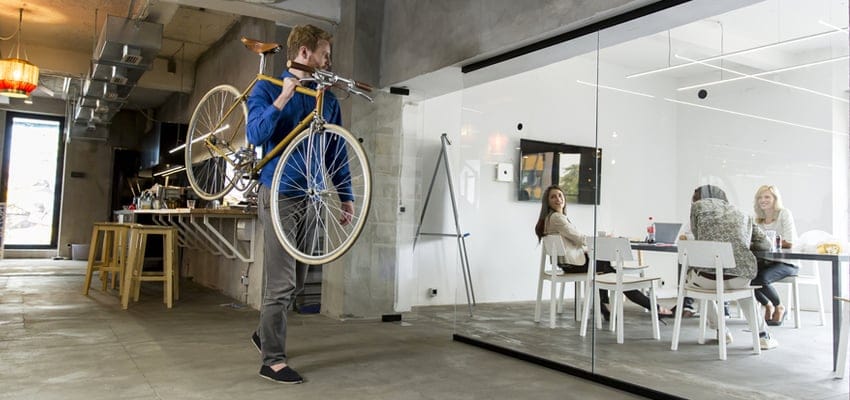Tips for Moving Office | Workplace Strategy
Many people underestimate the time it takes for an office relocation and end up stressed, over budget and behind schedule. The key to avoiding this?
Effective planning.
We recommend you start reviewing your options around 12 to 18 months before your existing office lease expires, regardless of whether you are renewing, renegotiating or relocating.
If you’ve decided to relocate your office, here’s a general timeline of activity to help you stay on time and on budget.
Develop a workplace strategy: 2-4 weeks
Before starting your search for a property, it’s best to undertake a workplace strategy. This will help you define the goals of the business and understand what kind of space will support your business now and in the future. Your workplace strategy will include a needs analysis, an accommodation analysis and a location feasibility study. This process generally takes around two to four weeks, and is well worth it.
Search for a property & lease space: 6-9 months
Finding the right space can take time, but it’s an important decision that will affect the long-term success of your business, so it’s important to be patient. Your workplace strategy will help you narrow down options for your new space.
The next steps are to:
- Inspect potential properties
- Submit offers for short-listed properties and start negotiations
- Choose your preferred property and finalise negotiations
- Conduct spatial test fits and a building evaluation
- Provide final approval and sign the lease
Design your space: 8-10 weeks
Once you’ve leased your property, it’s time to start planning what is required in the new premises. You should start with an in-depth briefing and a needs analysis with a design consultancy firm.
Get fees from a number of design consultancy firms, preferably ones with the capacity to build, as this will make for a smoother refurbishment process. Once you’ve chosen your preferred design, develop contract schedules and seek any statutory approvals required.
Delivery: 10-12 weeks
Don’t underestimate the time it will take to have all furniture and fittings delivered and installed. Renovation works like reflooring and painting should be factored into your timeline.
The big move: 2-4 weeks
Planning ahead will help you minimise downtime and ensure your team can set up their workspaces and get settled in with a minimum of fuss. You’ll need to work closely with your delivery team to ensure they move items at a suitable time and place them in the correct position.
Account for extra contractors you may need to set up and test your IT networks and phone systems so your staff can get on with their work in the new office fast. This is especially critical if you are taking existing equipment from old office to new; if it’s nearing end of life (or end of lease) consider replacing it.
Need more? Check out our ultimate guide to planning your office move
Common mistakes to avoid when moving offices
When it comes to office relocations, even the smallest mistakes can make a big impact. A collaborative effort is required from key people in your organisation, as well as external stakeholders.
Here are some of the most common mistakes we see in office moves:
- Lack of planning or preparation, or leaving it too late, resulting in hasty decisions, increased costs and fewer options when it comes to service providers
- Not having a budget, or having unrealistic expectations about costs
- Lacking the right advice and expertise in place, leading to poor communication and expensive mistakes
Contact us for a free consultation to discuss your relocation or workplace strategy needs.





